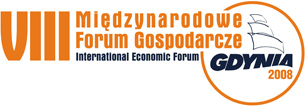VIII INTERNATIONAL ECONOMIC FORUM
28 - 29 MAY 2008
THE REGIONAL AIRPORTS PANEL
Regional airports - formal and legal aspects of operation and development as well as users' expectations
Professor Włodzimierz Rydzkowski
Panel Moderator
Chairman of Transport Policy Department, University of Gdańsk
tel. 058 551 56 45, e-mail: rydz@bg.univ.gda.pl

The four years following Polish EU accession have been a period of growth of the aviation market . unprecedented in the post-war history. This growth and the turnover of airports was faster not only than elsewhere in Europe, but in the whole world, too. This trend is expected to continue in the next years and decades. The Civil Aviation Office estimates that Polish airports will handle 22.6 million passengers in 2008 . 18% above the 2007 figure of 19.1 m. The growth is likely to slow down a little, in view of the relatively high reference basis. The number of passengers handled by Polish airports should reach 25.8 million in 2009 and 28.6 million in 2010. From 2011 onwards the growth is likely to stabilise at a high level and the traffic forecasts are impressive. The number of passengers is expected to exceed 40 million in 2015, and reach 54 million in 2020. In 2030, the last year covered by the forecast, all Polish airports are to handle a total of 80 million passengers.
Experts claim that passenger traffic until 2030 will be growing at an annual rate of 6.5 per cent, and in the nearest future it is the regional airports that will grow most rapidly. Traffic at all regional airports will, on the average, increase by 25 per cent in 2008, forcing the share of the Okęcie hub down from 48.43% in 2007 to 45% in 2008. This share will drop to 39% in 2014, after which it will continue to decrease.
It is against this background that opportunities and threats facing Polish regional airports . the existing ones and those likely to emerge . have to be identified. The discussion panel held within the International Economic Forum in Gdynia is to serve this goal. The panel will assemble representatives of authorities and institutions responsible for the formal framework within which airports operate, airport customers in the broad sense of the word and representatives of the airports themselves. The debate has been divided into two parts; the first devoted to the formal and legal environment of regional airports, the second to customer expectations. The debate is expected to produce conclusions, which if implemented, will help to meet the traffic forecasts and ensure quality service and safety to both passengers and cargo.

